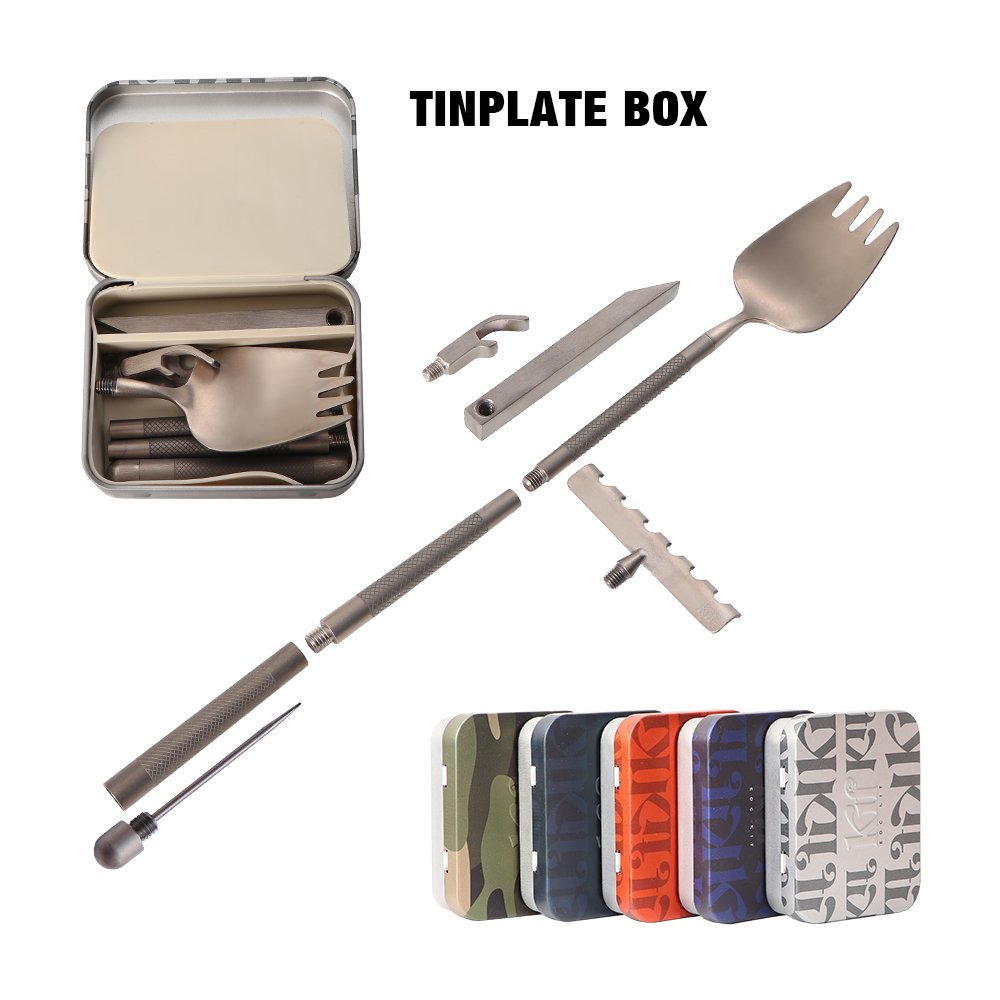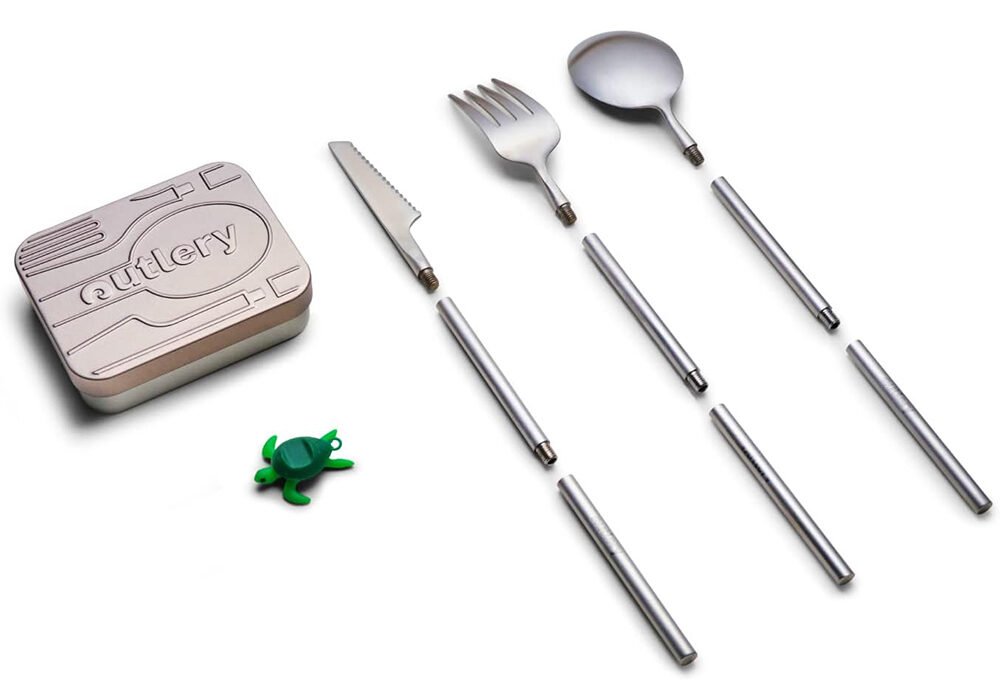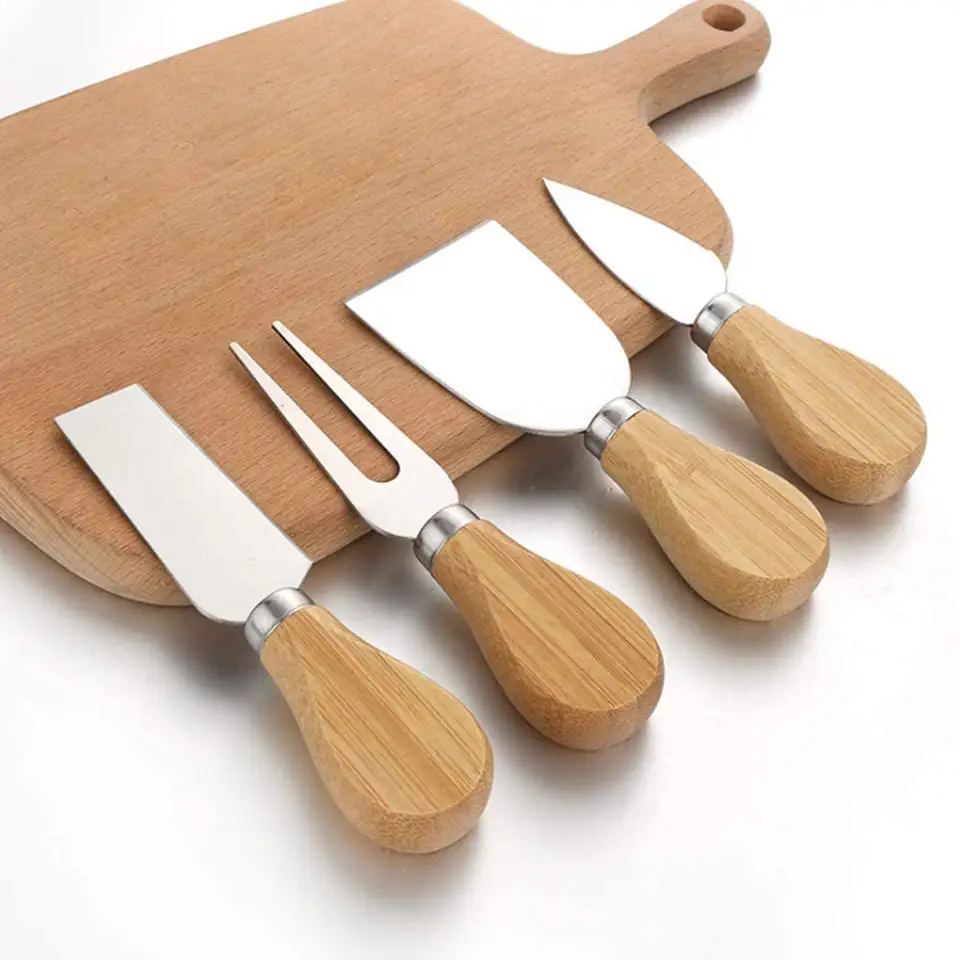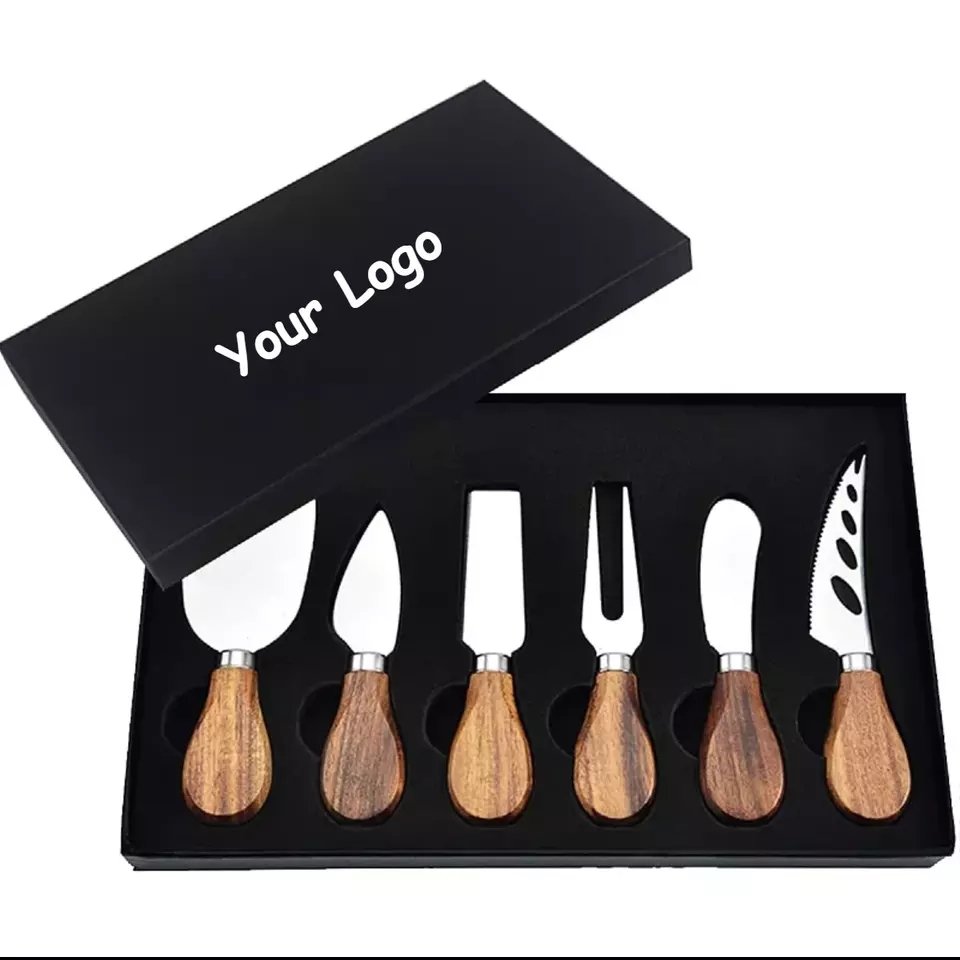Choosing the right cutlery for your kitchen can be overwhelming. Two of the most popular options are stainless steel and titanium. But which one is truly better?
Stainless steel and titanium cutlery both have their advantages, but your choice depends on factors like durability, weight, cost, and specific needs.
To help you make an informed decision, let’s dive deeper into the differences between stainless steel and titanium cutlery, so you can understand which material is best for your needs.
Table of Contents
What are the key differences between stainless steel and titanium cutlery?
It’s easy to assume that all cutlery is the same, but stainless steel and titanium have distinct qualities. Let’s break them down.
Stainless steel is known for its strength, versatility, and resistance to rust, while titanium is lightweight, highly durable, and resistant to corrosion, but it comes at a higher cost.
The decision between stainless steel and titanium cutlery boils down to what you value most in your utensils. Let’s take a look at the differences in greater detail.
Material Strength and Durability
– Stainless Steel: Stainless steel is generally strong, but over time, it can lose some of its sharpness. It’s highly resistant to rust, but it can still corrode if exposed to harsh environments.
– Titanium:Titanium, on the other hand, is known for its impressive strength-to-weight ratio. It’s much lighter than stainless steel while being stronger and more resistant to bending or breaking.
| Property | Stainless Steel | Titanium |
|---|---|---|
| Weight | Heavy | Light |
| Strength | High | Very High |
| Resistance to Rust | High | Extremely High |
| Cost | Affordable | Expensive |
As you can see, titanium excels in areas like strength and resistance to corrosion. However, its higher price might make it less attractive for some.
Cost Considerations
– Stainless Steel: Stainless steel is typically more affordable than titanium, making it an excellent choice for everyday use. It’s easy to manufacture and thus, available at various price points.
– Titanium: Titanium cutlery, while stronger and more corrosion-resistant, is much more expensive. This is due to the cost of the raw material and the complexity involved in manufacturing titanium products.
Weight and Comfort
– Stainless Steel: Stainless steel cutlery tends to be heavier, which might be preferred by some users who enjoy the solid feel. However, it may not be the best for those who need lightweight options for travel or frequent use.
– Titanium: Titanium cutlery, being lighter, is easier to handle and perfect for people looking for a lighter set of utensils. It’s also a great option for those who need cutlery for outdoor activities or hiking.

Is stainless steel more durable than titanium?
Durability is a significant factor when selecting cutlery. While both materials are tough, each has unique strengths and weaknesses.
While both stainless steel and titanium are durable, titanium outperforms stainless steel in terms of long-term resilience, particularly in resisting scratches and impacts.
Durability isn’t just about how long a material lasts; it also includes factors like scratch resistance, impact resistance, and its ability to handle harsh environments. Let’s look at how these materials fare in these areas.
Scratch Resistance
– Stainless Steel: While stainless steel is resistant to corrosion, it can scratch more easily compared to titanium. These scratches can affect its appearance over time, especially with heavy use.
– Titanium: Titanium is far superior when it comes to scratch resistance. Its surface is tougher and less prone to visible damage, even with rough handling.
Impact Resistance
– Stainless Steel: Stainless steel can bend or warp when subjected to significant force. While it can handle everyday use, it isn’t as resilient under extreme conditions.
– Titanium: Titanium is highly impact-resistant. It can handle much more stress before deforming, making it the ideal choice for users looking for cutlery that can withstand heavy-duty use.
| Durability Aspect | Stainless Steel | Titanium |
|---|---|---|
| Scratch Resistance | Moderate | Very High |
| Impact Resistance | Moderate | Very High |
| Corrosion Resistance | High | Very High |
Long-Term Resilience
– Stainless Steel: Stainless steel can last for decades if properly maintained, but it’s more susceptible to wear and tear over time.
– Titanium: Titanium cutlery is virtually indestructible and retains its functionality and appearance for a significantly longer time.

Which is better for specific needs: Stainless steel or titanium?
Different people need different things from their cutlery, so understanding how each material performs in various scenarios will help you decide which is better for your lifestyle.
If you’re looking for something budget-friendly for everyday use, stainless steel is a solid choice. However, if durability, lightness, and long-term investment are more important, titanium might be worth the extra cost.
When choosing between stainless steel and titanium, it’s crucial to consider your specific needs. Do you want cutlery that looks great, lasts long, or is easy to use? Let’s explore which material is better for different situations.
Everyday Use and Budget Considerations
– Stainless Steel: If you need cutlery for daily use and want to keep the costs down, stainless steel is a great option. It’s affordable, durable enough for regular meals, and available in a wide variety of designs.
– Titanium: Titanium is often reserved for premium or specialized cutlery. While it’s superior in strength, it’s a significant investment for regular kitchen use.
Specialized or Outdoor Use
– Stainless Steel: Stainless steel can work for outdoor or camping use, but it might not be as durable in rugged conditions.
– Titanium: Titanium shines in outdoor settings, offering a lightweight, corrosion-resistant, and durable option for those on the go.
| Use Case | Stainless Steel | Titanium |
|---|---|---|
| Everyday Use | Best | Good |
| Outdoor/Camping | Good | Best |
| Budget-Friendly | Best | Expensive |
What is the best metal for cutlery?
When it comes to selecting the best metal for cutlery, many factors come into play, from durability to aesthetics. Let’s examine the top contenders.
Stainless steel is often regarded as the best metal for cutlery due to its balance of strength, corrosion resistance, and affordability, though titanium also offers superior durability.
Choosing the best metal for cutlery is crucial, especially when you want a balance between cost, durability, and aesthetic appeal. Let’s break down the properties of the top metals used in cutlery today.
Stainless Steel: The All-Rounder
– Strength and Versatility: Stainless steel is the most popular choice for cutlery due to its versatility. It comes in a variety of grades, such as 18/10 and 18/8, which offer high resistance to corrosion.
– Corrosion Resistance: Stainless steel is highly resistant to rust, making it perfect for kitchen use, where utensils are often exposed to moisture.
Titanium: The Premium Choice
– Lightweight and Strong: Titanium is much lighter than stainless steel, yet it’s incredibly strong and durable. It’s resistant to corrosion and is virtually indestructible.
– Non-reactive: Titanium doesn’t react with food, making it a great choice for those looking for non-toxic, hypoallergenic options.
Here’s a comparison of Stainless Steel and Titanium based on key properties:
| Metal | Durability | Corrosion Resistance | Weight | Cost |
|---|---|---|---|---|
| Stainless Steel | High | High | Moderate | Affordable |
| Titanium | Very High | Very High | Light | Expensive |
While stainless steel is a well-rounded, cost-effective option, titanium is better for those who seek high durability and lightweight utensils, despite the higher cost.

Is titanium or stainless steel healthier?
Health considerations are crucial when selecting cutlery, especially since utensils come in contact with food regularly. Which of these materials is the safer option?
Both titanium and stainless steel are safe for food contact, but titanium’s non-reactive properties give it an edge when it comes to health.
When choosing cutlery, the health implications of the materials involved should not be overlooked. Let’s explore how stainless steel and titanium compare in terms of safety and health benefits.
Stainless Steel: The Safe Standard
– Non-toxic Materials: Stainless steel, especially high-quality grades like 18/10, is considered food-safe. It doesn’t leach harmful chemicals into food, making it a widely used and trusted material.
– Nickel and Other Alloys: However, some stainless steel alloys may contain nickel or other metals, which can cause allergic reactions in sensitive individuals.
Titanium: The Hypoallergenic Option
– Non-Reactive and Safe: Titanium is hypoallergenic and non-reactive, meaning it won’t interact with food. This makes it a great option for people with allergies or sensitivities to other metals.
– Pure Titanium: Pure titanium is highly resistant to corrosion and doesn’t release harmful substances, which makes it safer for long-term use.
| Material | Safety | Reactivity | Allergy Concerns |
|---|---|---|---|
| Stainless Steel | Safe | Low, can contain nickel | Possible (nickel) |
| Titanium | Very Safe | None | No concerns |
Titanium wins in terms of health safety due to its hypoallergenic and non-reactive properties, making it a preferred choice for health-conscious consumers.
What lasts longer, stainless steel or titanium?
When it comes to longevity, you want cutlery that can stand the test of time. Let’s compare the lifespan of stainless steel and titanium cutlery.
Titanium cutlery generally lasts longer than stainless steel due to its superior resistance to corrosion, scratching, and other forms of wear.
The longevity of your cutlery depends on several factors, such as material strength, resistance to wear, and the environment in which the utensils are used. Here’s how stainless steel and titanium measure up in terms of lifespan.
Stainless Steel: Durable but Not Indestructible
– Corrosion Resistance: While stainless steel is highly resistant to rust, it can still deteriorate over time, especially if exposed to harsh conditions like saltwater or acidic foods.
– Wear and Tear: Stainless steel can show signs of wear and tear more easily than titanium, including scratches and dents.
Titanium: The Long-Lasting Option
– Unmatched Durability: Titanium is virtually indestructible. It is highly resistant to corrosion and doesn’t scratch easily, which helps it retain its appearance and functionality for a longer period.
– Low Maintenance: Titanium requires minimal maintenance and doesn’t suffer from the same wear and tear issues that stainless steel does.
| Material | Lifespan | Scratch Resistance | Corrosion Resistance | Maintenance |
|---|---|---|---|---|
| Stainless Steel | Long | Moderate | High | Moderate |
| Titanium | Very Long | Very High | Very High | Low |
Titanium is the clear winner when it comes to longevity, making it the better choice if you want cutlery that lasts for years with minimal signs of wear.
Is titanium cutlery worth it?
Titanium cutlery is undeniably appealing, but is it worth the higher price tag? Let’s weigh the pros and cons to determine if it’s the right investment.
While titanium cutlery offers superior durability, lightweight design, and health benefits, its high cost may not justify the investment for all consumers.
Titanium cutlery is a premium choice, but before you make a decision, it’s important to evaluate its value. Let’s take a closer look at the pros and cons to help you determine if it’s worth the investment.
The Benefits of Titanium Cutlery
– Durability: Titanium is incredibly durable, resistant to rust, scratches, and bending, which makes it ideal for long-term use.
– Lightweight: Titanium is lighter than stainless steel, which is beneficial for outdoor activities, travel, or those looking for easier-to-handle cutlery.
– Health Benefits: It’s non-reactive and hypoallergenic, making it a safer option for those with sensitivities or allergies.
The Drawbacks of Titanium Cutlery
– High Cost: The main drawback of titanium cutlery is its price. It’s significantly more expensive than stainless steel, which might make it an impractical choice for everyday use.
– Limited Availability: Titanium cutlery is not as widely available as stainless steel, which can limit your options when shopping.
| Factor | Titanium | Stainless Steel |
|---|---|---|
| Durability | Very High | High |
| Weight | Light | Moderate |
| Health Benefits | Excellent | Good |
| Cost | Expensive | Affordable |
Titanium cutlery is worth the investment if you prioritize durability, lightweight design, and health benefits, but it may not be the best choice for budget-conscious buyers.
In conclusion, the choice between stainless steel and titanium cutlery depends on your priorities. Stainless steel is more budget-friendly, while titanium offers superior durability and lightness.





